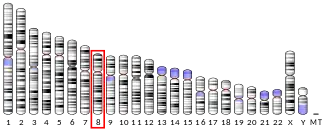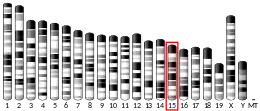| LAPTM4B | |||||||||||||||||||||||||||||||||||||||||||||||||||
|---|---|---|---|---|---|---|---|---|---|---|---|---|---|---|---|---|---|---|---|---|---|---|---|---|---|---|---|---|---|---|---|---|---|---|---|---|---|---|---|---|---|---|---|---|---|---|---|---|---|---|---|
| Identifiers | |||||||||||||||||||||||||||||||||||||||||||||||||||
| Aliases | LAPTM4B, LAPTM4beta, LC27, lysosomal protein transmembrane 4 beta | ||||||||||||||||||||||||||||||||||||||||||||||||||
| External IDs | OMIM: 613296 MGI: 1890494 HomoloGene: 10182 GeneCards: LAPTM4B | ||||||||||||||||||||||||||||||||||||||||||||||||||
| |||||||||||||||||||||||||||||||||||||||||||||||||||
| |||||||||||||||||||||||||||||||||||||||||||||||||||
| |||||||||||||||||||||||||||||||||||||||||||||||||||
| |||||||||||||||||||||||||||||||||||||||||||||||||||
| |||||||||||||||||||||||||||||||||||||||||||||||||||
| Wikidata | |||||||||||||||||||||||||||||||||||||||||||||||||||
| |||||||||||||||||||||||||||||||||||||||||||||||||||
Lysosomal-associated transmembrane protein 4B is a protein that in humans is encoded by the LAPTM4B gene.[5]
LAPTM4B protein contains a lysosome localization motif and localizes on late endosomes and lysosomes.
Clinical significance
Increased expression of LAPTM4B has been found in breast, liver, lung, ovarian, uterine, gastric cancers. Elevated LAPTM4B level contributes to chemotherapy resistance in breast cancer. Overexpression of LAPTM4B causes anthracyclines (doxorubicin, daunorubicin, and epirubicin) resistance by retaining drug in the cytoplasm and decreasing nuclear localization of drug and drug induced DNA damage.[6]
LAPTM4B also promotes autophagy, a cell survival mechanism mediated by lysosomes. LAPTM4B promotes autophagy and renders tumor cells resistant to metabolic and genotoxic stress and results in more rapid tumor growth.[7] Based on these findings, LAPTM4B can be utilized to be a therapeutic target to prevent chemotherapy resistance or a marker to identify the patients who will not benefit from anthracyclines.[6]
LAPTM4B mediates pro-cancer functions through epidermal growth factor receptor (EGFR), a well-known oncogene overexpressed and/or mutated in many solid tumors. In nutrient rich conditions, LAPTM4B amplifies EGFR signaling by blocking the intraluminal sorting and lysosomal degradation of activated EGFR.[8] In stressed conditions such as nutrient deprivation, LAPTM4B alternatively sequesters inactive EGFR at an endosomal complex that contributes to autophagy upregulation, a function independent of EGFR tyrosine kinase activity.[9] LAPTM4B selectively interacts with inactive EGFR, which is markedly promoted by serum starvation.[9] Thus, LAPTM4B not only augments proliferative signaling, but it also increases cellular stress resistance. These studies suggest that co-targeting EGFR with LAPTM4B or autophagy might improve therapeutic response in EGFR positive cancer patients.
References
- 1 2 3 GRCh38: Ensembl release 89: ENSG00000104341 - Ensembl, May 2017
- 1 2 3 GRCm38: Ensembl release 89: ENSMUSG00000022257 - Ensembl, May 2017
- ↑ "Human PubMed Reference:". National Center for Biotechnology Information, U.S. National Library of Medicine.
- ↑ "Mouse PubMed Reference:". National Center for Biotechnology Information, U.S. National Library of Medicine.
- ↑ "Entrez Gene: LAPTM4B lysosomal associated protein transmembrane 4 beta".
- 1 2 Li Y, Zou L, Li Q, Haibe-Kains B, Tian R, Li Y, et al. (February 2010). "Amplification of LAPTM4B and YWHAZ contributes to chemotherapy resistance and recurrence of breast cancer". Nature Medicine. 16 (2): 214–218. doi:10.1038/nm.2090. PMC 2826790. PMID 20098429.
- ↑ Li Y, Zhang Q, Tian R, Wang Q, Zhao JJ, Iglehart JD, et al. (December 2011). "Lysosomal transmembrane protein LAPTM4B promotes autophagy and tolerance to metabolic stress in cancer cells". Cancer Research. 71 (24): 7481–7489. doi:10.1158/0008-5472.CAN-11-0940. PMC 3261660. PMID 22037872.
- ↑ Tan X, Sun Y, Thapa N, Liao Y, Hedman AC, Anderson RA (February 2015). "LAPTM4B is a PtdIns(4,5)P2 effector that regulates EGFR signaling, lysosomal sorting, and degradation". The EMBO Journal. 34 (4): 475–490. doi:10.15252/embj.201489425. PMC 4331002. PMID 25588945.
- 1 2 Tan X, Thapa N, Sun Y, Anderson RA (January 2015). "A kinase-independent role for EGF receptor in autophagy initiation". Cell. 160 (1–2): 145–160. doi:10.1016/j.cell.2014.12.006. PMC 4297316. PMID 25594178.
Further reading
- Hartley JL, Temple GF, Brasch MA (November 2000). "DNA cloning using in vitro site-specific recombination". Genome Research. 10 (11): 1788–1795. doi:10.1101/gr.143000. PMC 310948. PMID 11076863.
- Wiemann S, Weil B, Wellenreuther R, Gassenhuber J, Glassl S, Ansorge W, et al. (March 2001). "Toward a catalog of human genes and proteins: sequencing and analysis of 500 novel complete protein coding human cDNAs". Genome Research. 11 (3): 422–435. doi:10.1101/gr.GR1547R. PMC 311072. PMID 11230166.
- With S, Rice T, Salinas C, Auld V (March 2003). "Fire exit is a potential four transmembrane protein expressed in developing Drosophila glia". Genesis. 35 (3): 143–152. doi:10.1002/gene.10177. PMID 12640618. S2CID 29252213.
- Shao GZ, Zhou RL, Zhang QY, Zhang Y, Liu JJ, Rui JA, et al. (August 2003). "Molecular cloning and characterization of LAPTM4B, a novel gene upregulated in hepatocellular carcinoma". Oncogene. 22 (32): 5060–5069. doi:10.1038/sj.onc.1206832. PMID 12902989.
- Liu XR, Zhou RL, Zhang QY, Zhang Y, Jin YY, Lin M, et al. (June 2004). "Structure analysis and expressions of a novel tetratransmembrane protein, lysosoma-associated protein transmembrane 4 beta associated with hepatocellular carcinoma". World Journal of Gastroenterology. 10 (11): 1555–1559. doi:10.3748/wjg.v10.i11.1555. PMC 4572753. PMID 15162524.
- Wiemann S, Arlt D, Huber W, Wellenreuther R, Schleeger S, Mehrle A, et al. (October 2004). "From ORFeome to biology: a functional genomics pipeline". Genome Research. 14 (10B): 2136–2144. doi:10.1101/gr.2576704. PMC 528930. PMID 15489336.
- Kasper G, Vogel A, Klaman I, Gröne J, Petersen I, Weber B, et al. (June 2005). "The human LAPTM4b transcript is upregulated in various types of solid tumours and seems to play a dual functional role during tumour progression". Cancer Letters. 224 (1): 93–103. doi:10.1016/j.canlet.2004.10.004. PMID 15911104.
- Otsuki T, Ota T, Nishikawa T, Hayashi K, Suzuki Y, Yamamoto J, et al. (2007). "Signal sequence and keyword trap in silico for selection of full-length human cDNAs encoding secretion or membrane proteins from oligo-capped cDNA libraries". DNA Research. 12 (2): 117–126. doi:10.1093/dnares/12.2.117. PMID 16303743.
- Mehrle A, Rosenfelder H, Schupp I, del Val C, Arlt D, Hahne F, et al. (January 2006). "The LIFEdb database in 2006". Nucleic Acids Research. 34 (Database issue): D415–D418. doi:10.1093/nar/gkj139. PMC 1347501. PMID 16381901.
- Maeda K, Horikoshi T, Nakashima E, Miyamoto Y, Mabuchi A, Ikegawa S (2007). "MATN and LAPTM are parts of larger transcription units produced by intergenic splicing: intergenic splicing may be a common phenomenon". DNA Research. 12 (5): 365–372. doi:10.1093/dnares/dsi017. PMID 16769693.
- Liu Y, Zhang QY, Qian N, Zhou RL (February 2007). "Relationship between LAPTM4B gene polymorphism and susceptibility of gastric cancer". Annals of Oncology. 18 (2): 311–316. doi:10.1093/annonc/mdl394. PMID 17074969.



